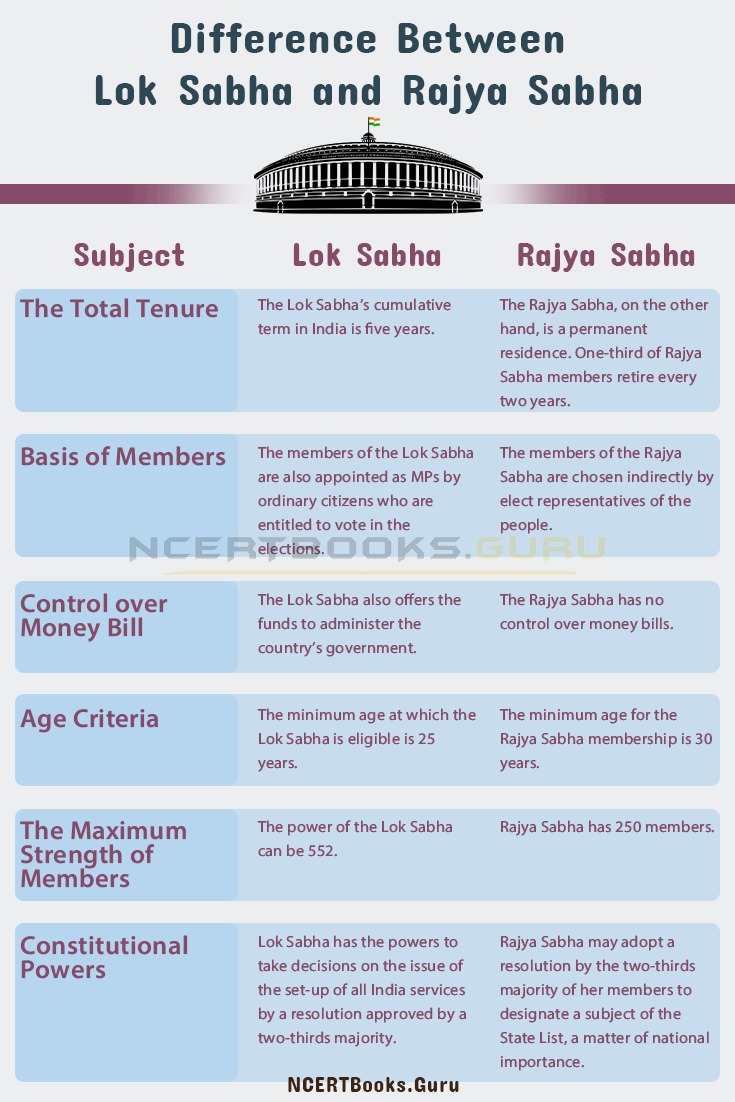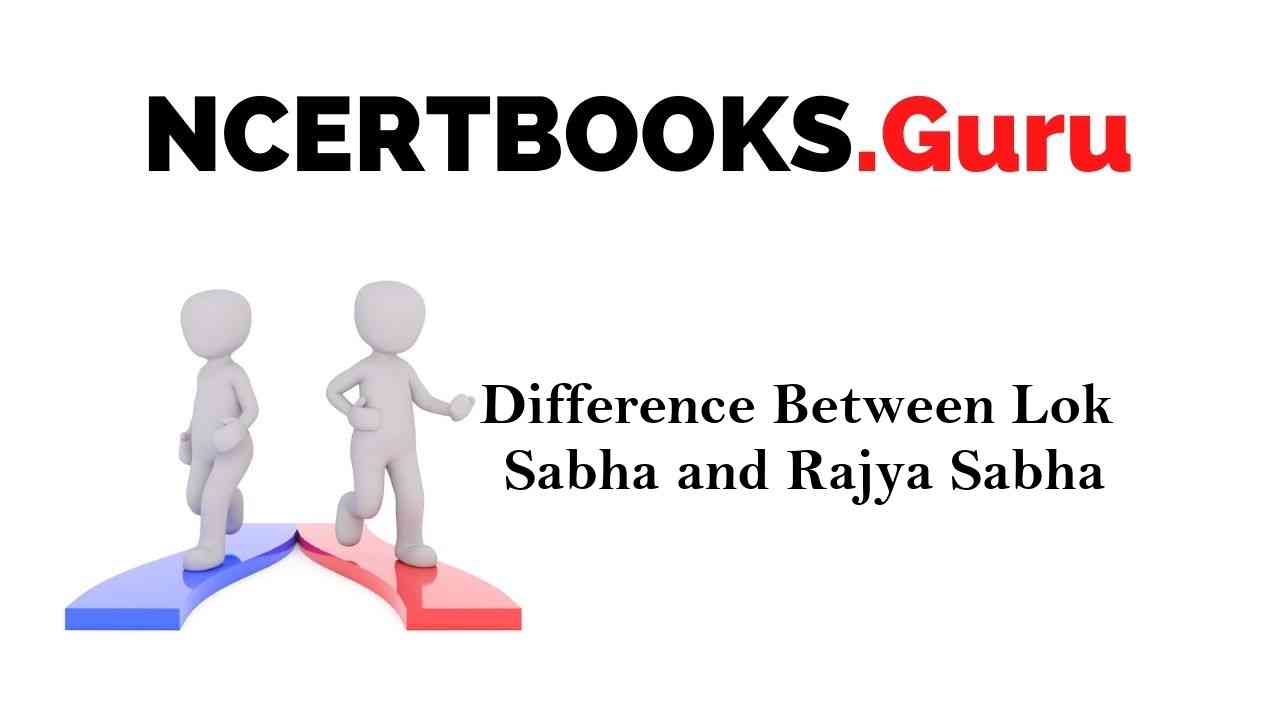The Lok Sabha, or People’s Assembly, is the lower house of India’s two-camera parliament. Rajya Sabha is the upper house. Members of the Lok Sabha shall be chosen to serve their respective constituencies by universal suffrage for adults and a first-the-post system and occupy seats for five years or until the President has disbanded it, on the advice of the Council of Ministers.
You can also find differences between articles on various topics that you need to know. Just tap on the quick link available and get to know the basic differences between them.
What are the Differences Between Lok Sabha and Rajya Sabha
The house is in the Sansad Bhavan, Lok Sabha Chambers, New Delhi. The High House of the Bicameral Parliament of India in the Rajya Sabha, or Council of States. It currently has a maximum membership of 245, of which 233 are chosen by the representatives of the states and union territories by an open ballot using single transferable votes. Simultaneously, the President may nominate 12 members to contribute to the arts, literature, research, and social services.
| Subject | Lok Sabha | Rajya Sabha |
| The Total Tenure | The Lok Sabha’s cumulative term in India is five years. | The Rajya Sabha, on the other hand, is a permanent residence. One-third of Rajya Sabha members retire every two years. |
| Basis of Members | The members of the Lok Sabha are also appointed as MPs by ordinary citizens who are entitled to vote in the elections. | The members of the Rajya Sabha are chosen indirectly by elect representatives of the people. |
| Control over Money Bill | The Lok Sabha also offers the funds to administer the country’s government. | The Rajya Sabha has no control over money bills. |
| Age Criteria | The minimum age at which the Lok Sabha is eligible is 25 years. | The minimum age for the Rajya Sabha membership is 30 years. |
| The Maximum Strength of Members | The power of the Lok Sabha can be 552. | Rajya Sabha has 250 members. |
| Constitutional Powers | Lok Sabha has the powers to take decisions on the issue of the set-up of all India services by a resolution approved by a two-thirds majority. | Rajya Sabha may adopt a resolution by the two-thirds majority of her members to designate a subject of the State List, a matter of national importance. |

The Total Tenure
The Lok Sabha’s cumulative term in India is five years. The Lok Sabha dissolves after the five-year period ends. The Rajya Sabha, on the other hand, is a permanent residence. One-third of Rajya Sabha members retire every two years.
Basis of Members
The people’s house is called the Lok Sabha. The members of the Lok Sabha are also appointed as MPs by ordinary citizens who are entitled to vote in the elections. In the assemblies of the various countries of the world and the territories of the unions, Rajya Sabha is the State Council, and the members of the Sabha Rajya are chosen indirectly by elect representatives of the people.
Control over Money Bill
Then comes the difference of the control over the money bill, which states that only in the Sabha locomotive may money bills be added. The Lok Sabha also offers the funds to administer the country’s government. The Rajya Sabha has no control over money bills.
Age Criteria
The minimum age at which the Lok Sabha is eligible is 25 years. If you choose to challenge the option to become a Lok Sabha member, then you have to be 25 years old or older. The minimum age for the Rajya Sabha membership is 30 years. So, a person needs to be 30 years or higher should you want to contest the election to Rajya Sabha.
The Maximum Strength of Members
The power of the Lok Sabha can be 552. Currently, there are 545 members, two Anglo-Indian seats, and the President of India nominates them. Rajya Sabha has 250 members.
Constitutional Powers
Rajya Sabha has a few special constitutional powers over Lok Sabha like Rajya Sabha has the powers to take decisions on the issue of the set-up of all India services by a resolution approved by a two-thirds majority. Rajya Sabha may adopt a resolution by the two-thirds majority of her members to designate a subject of the State List, a matter of national importance.
Conclusion
Both of these chambers vary largely in their functions and powers. Lok Sabha’s term is dissolved for just five years, whereas that of Rajya Sabha is a permanent assembly, but one-third of its members resign after every two years. To understand the problems better, take a look at the article below, which lists all the fundamental gaps between Lok Sabha and Rajya Sabha.
Joint meetings between both houses take place anytime there is a disagreement about some unusual laws. The number of Rajya Sabha members, however, is half that of the Lok Sabha. Lok Sabha’s power is double the Rajya Sabha’s power as well.
